Introduction to Caramel Crunch
The Allure of Caramel
Caramel Crunch has long been a beloved flavor in the world of sweets and desserts. Its rich, buttery taste combined with a hint of burnt sugar creates a sensory experience that’s hard to resist. Whether drizzled over ice cream, incorporated into candies, or used as a base for sauces, caramel’s versatility and appeal are undeniable. The deep, amber color and the complexity of flavors that develop during the caramelization process add a sophisticated touch to any treat.
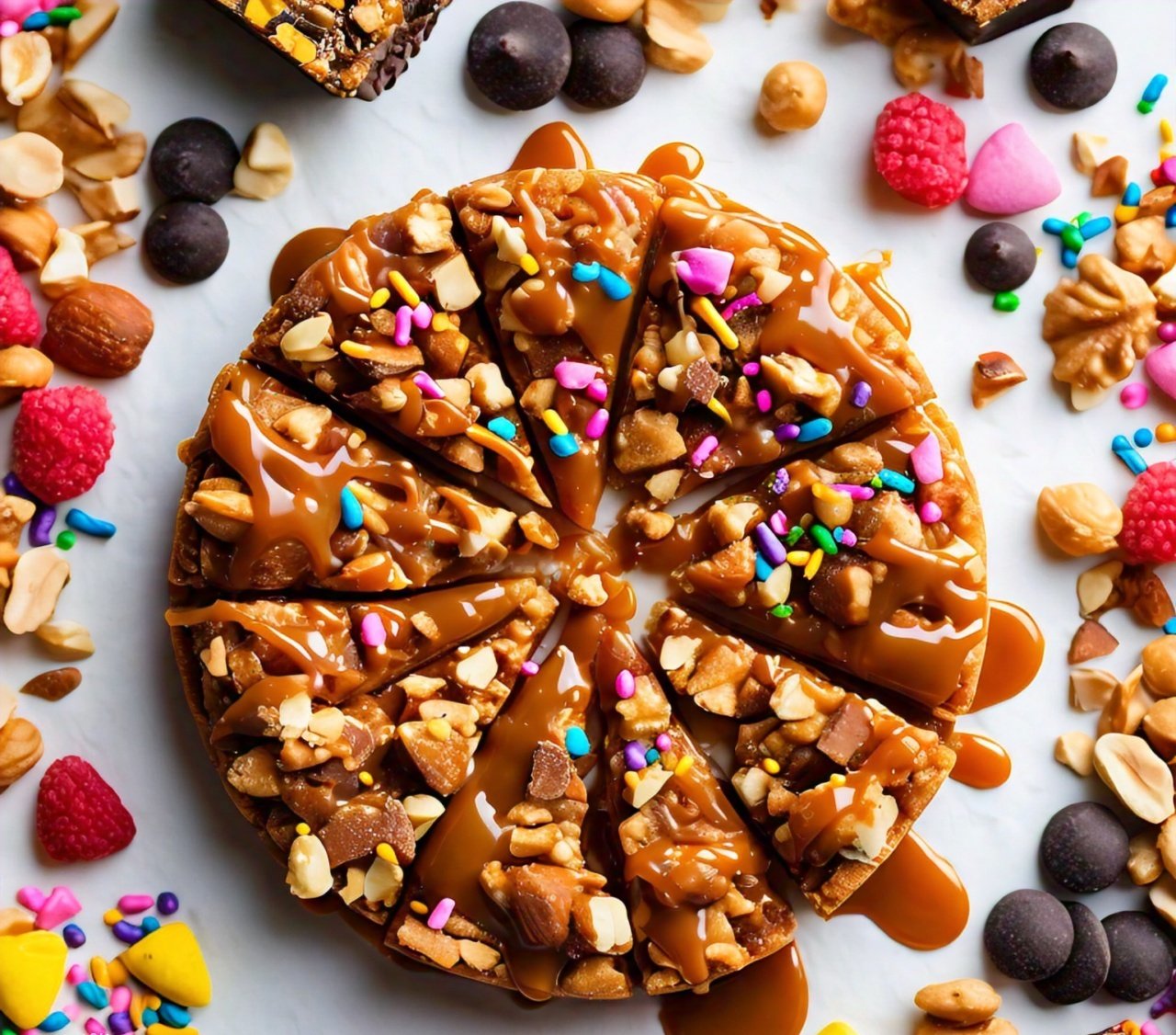
What Makes Caramel Crunch Special?
Caramel crunch takes the decadence of caramel and adds a satisfying texture that makes it stand out. The interplay between the smooth, melt-in-your-mouth caramel and the crisp, crunchy bits creates a contrast that tantalizes the taste buds. This unique combination makes caramel crunch a favorite ingredient in various desserts and snacks, from candy bars to gourmet confections. The added crunch enhances the overall eating experience, making each bite more exciting and enjoyable.
A Brief History of Caramel Delights
Caramel has been enjoyed for centuries, with its origins tracing back to the early days of candy making. The process of caramelization, where sugar is heated until it turns a deep amber color, was first documented by Arab confectioners in the 10th century. Over time, caramel recipes spread across the globe, evolving and adapting to different culinary traditions. In the 18th century, European chefs refined the techniques and recipes, leading to the caramel we know and love today. Today, caramel crunch represents a modern twist on this ancient treat, combining classic flavors with innovative textures.
Ingredients and Variations
Basic Ingredients
Creating caramel crunch requires just a few essential ingredients. These foundational components come together to form the rich, buttery, and crisp treat loved by many. Granulated sugar is the primary ingredient in caramel crunch, providing sweetness and undergoing caramelization to develop the characteristic flavor and color. Butter adds a creamy, rich texture to the caramel, enhancing its flavor and mouthfeel. Heavy cream or whipping cream is used to create a smooth, luscious caramel, helping to balance the sweetness of the sugar. A small amount of vanilla extract enhances the overall flavor, adding a subtle complexity, and a pinch of salt is often added to intensify the sweetness and balance the flavors.
Popular Variations
Caramel crunch is highly versatile, and numerous variations can be created by incorporating different ingredients. Here are some popular variations. Nutty Caramel Crunch includes sugar, butter, cream, vanilla extract, salt, and a variety of nuts such as almonds, pecans, or walnuts. Nuts are added to the caramel mixture or sprinkled on top before it cools, adding a rich, earthy flavor and a satisfying crunch. Chocolate-Dipped Caramel features sugar, butter, cream, vanilla extract, salt, and chocolate (dark, milk, or white). Once the caramel has cooled and set, it is dipped in melted chocolate, combining the sweetness of caramel with the rich, creamy texture of chocolate, creating an indulgent treat.
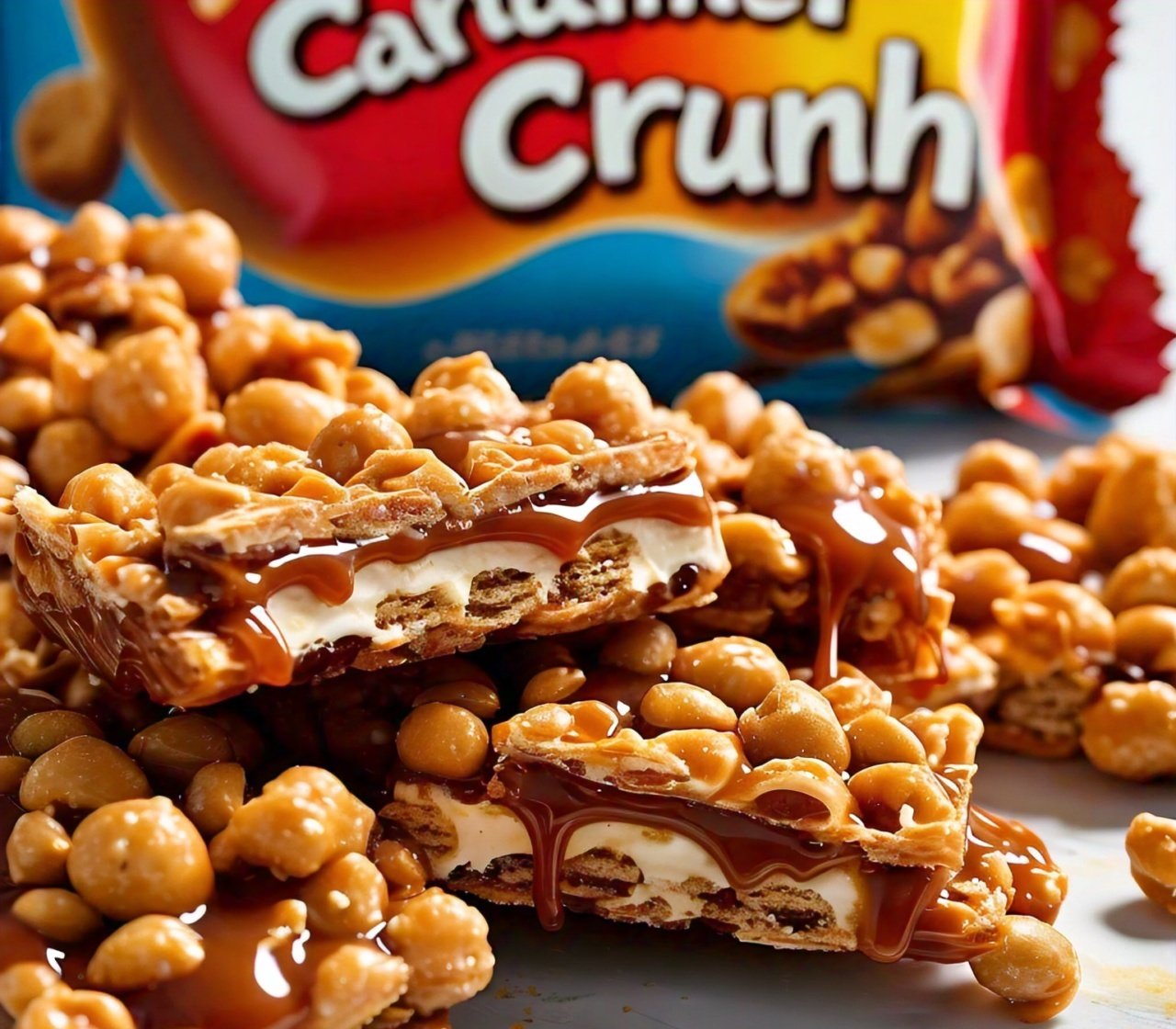
Healthier Alternatives
For those looking to enjoy caramel crunch without the added guilt, there are several healthier alternatives available. These alternatives focus on using natural sweeteners, healthier fats, and nutrient-dense ingredients. Natural sweeteners like coconut sugar, honey, or maple syrup can be used instead of granulated sugar. These sweeteners provide a lower glycemic index and contain more nutrients compared to refined sugar, also adding a unique flavor to the caramel. Healthier fats such as coconut oil or avocado oil can be used instead of butter. These oils are rich in healthy fats and can replace butter in the caramel recipe, contributing to a different but equally enjoyable texture.
The Caramelization Process
Caramelization is a complicated synthetic response that happens when sugar is warmed to high temperatures. As the sugar heats, its molecules break down and transform, creating new compounds that contribute to the flavor, color, and aroma of caramel. Initially, sugar melts and becomes a clear syrup at around 320°F (160°C). As the temperature rises, the syrup begins to darken and develop a rich, amber hue, while releasing a distinctive, sweet aroma. This process not only enhances the sweetness but also adds a depth of flavor characterized by notes of butter, nuts, and toffee. The key to successful caramelization lies in controlling the heat to ensure an even transformation without burning the sugar.
The Role of Temperature
Temperature plays a critical role in the caramelization process, as it directly affects the outcome of the caramel’s flavor and texture. The ideal range for caramelization is between 320°F (160°C) and 350°F (175°C). At the lower end of this spectrum, sugar melts and begins to develop a light golden color, producing a mild, sweet flavor. As the temperature increases, the color deepens, and the flavor becomes more complex, with rich, buttery notes. If the temperature exceeds 350°F (175°C), the sugar can quickly burn, resulting in a bitter, unpleasant taste. Using a candy thermometer can help monitor the temperature accurately, ensuring the caramel reaches the desired stage without burning.
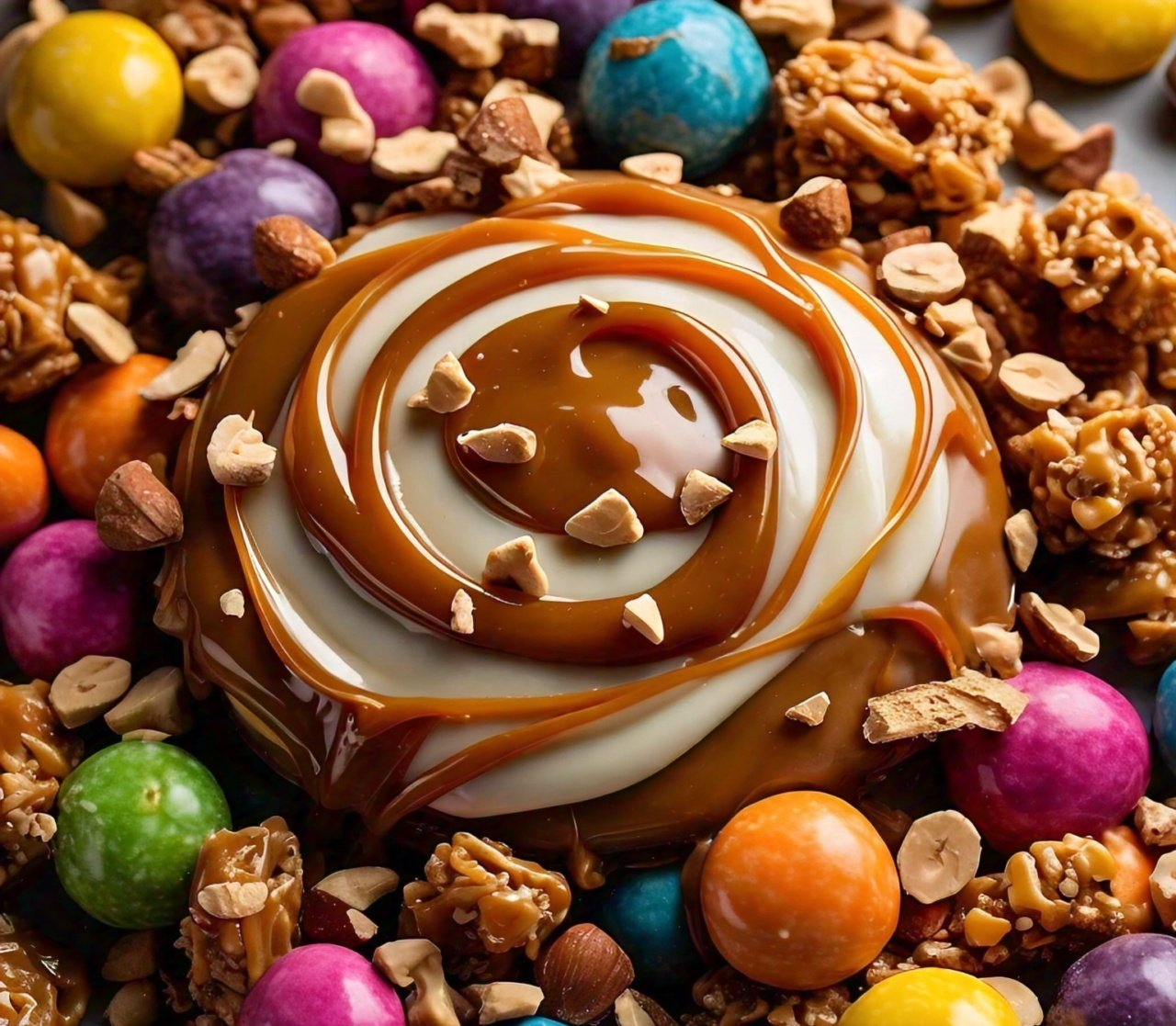
Achieving the Perfect Crunch
Achieving the perfect crunch in caramel involves a combination of precise timing, temperature control, and ingredient selection. Once the sugar reaches the optimal caramelization temperature, incorporating ingredients like nuts, seeds, or cereal can add the desired crunch. These ingredients should be mixed in just before the caramel cools to ensure they remain crispy. Cooling the caramel rapidly on a parchment-lined baking sheet helps set the texture, preventing it from becoming too hard or sticky. Additionally, storing caramel crunch in an airtight container keeps it fresh and maintains its crunchy texture. By carefully managing these factors, you can create a caramel that is both delicious and satisfying.
Classic Caramel Crunch
Creating classic caramel crunch at home is straightforward and rewarding. Start by gathering the essential ingredients: granulated sugar, butter, heavy cream, vanilla extract, and a pinch of salt. Begin by melting the sugar in a heavy-bottomed saucepan over medium heat, stirring constantly until it turns a golden brown. Carefully add the butter, stirring until melted, then slowly pour in the cream while continuing to stir. Add the vanilla extract and a pinch of salt, then cook the mixture until it thickens to your desired consistency. Pour the caramel onto a baking sheet lined with parchment paper and Allow it to cool totally prior to breaking it into pieces.
Nutty Caramel Crunch
For a delicious twist on the classic recipe, try making nutty caramel crunch. You’ll need the same basic ingredients as the classic recipe, plus a variety of nuts such as almonds, pecans, or walnuts. Follow the same steps to create the caramel mixture, then add the nuts before pouring the caramel onto the baking sheet. Ensure the nuts are evenly distributed throughout the mixture. Allow it to cool totally prior to breaking it into pieces. The addition of nuts adds a rich, earthy flavor and an extra layer of crunch that complements the smooth caramel perfectly.
Vegan Caramel Crunch
Vegan caramel crunch is a delightful alternative for those who avoid dairy products. Substitute the traditional ingredients with coconut sugar, coconut oil, and coconut cream. Begin by melting the coconut sugar in a saucepan over medium heat, stirring until it becomes a deep amber color. Add the coconut oil, stirring until fully incorporated, then slowly pour in the coconut cream while continuing to stir. Add a splash of vanilla extract and a pinch of salt, then cook the mixture until it thickens. Pour the vegan caramel onto a baking sheet lined with parchment paper andAllow it to cool totally prior to breaking it into pieces.
Caramel Crunch Ice Cream
Adding caramel crunch to ice cream creates a delightful contrast of textures and flavors. The smooth, creamy ice cream combined with the crispy, buttery caramel offers a multi-dimensional experience for the palate. Caramel crunch can be mixed into the ice cream base or used as a topping. For homemade ice cream, fold in pieces of caramel crunch just before the final freezing stage to ensure it stays crisp. Many commercial ice creams also feature caramel crunch, providing a convenient option for those who prefer ready-made treats.
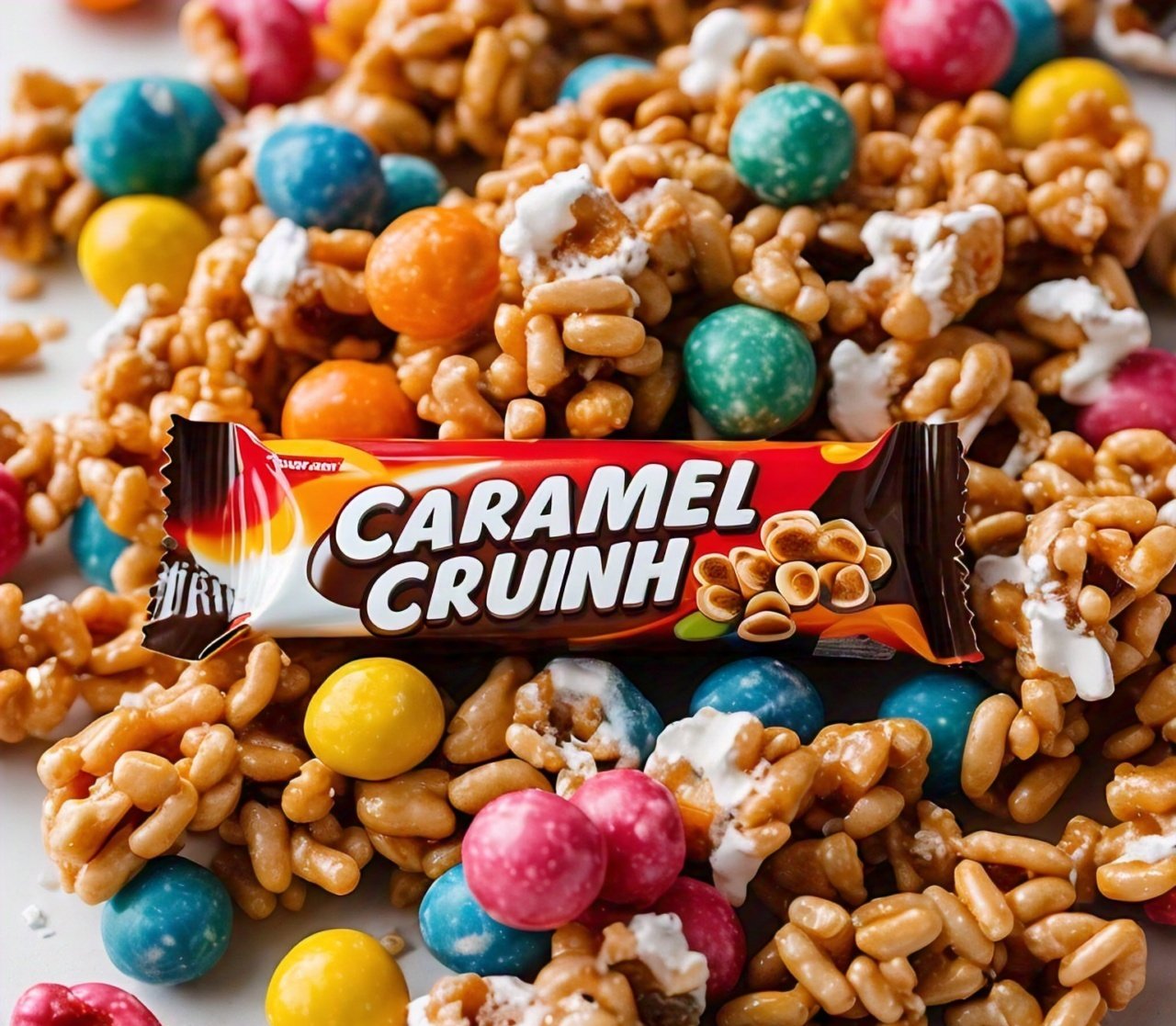
Caramel Crunch Cakes
Incorporating caramel crunch into cakes can add a delicious surprise in every bite. Whether used as a topping, filling, or mixed into the batter, caramel enhances the cake’s flavor and texture. For a decadent layer cake, sprinkle caramel crunch between the layers and over the frosting. It adds a pleasing crunch and a caramel flavor that complements the sweetness of the cake. Cupcakes and bundt cakes can also benefit from a caramel crunch topping, turning a simple dessert into a gourmet delight.
Caramel Crunch in Pastries
From croissants to danishes, caramel crunch can elevate pastries to gourmet status. A sprinkle of caramel crunch over the top or a hidden layer within the pastry can turn a simple treat into a decadent delight. For croissants, roll caramel into the dough before baking for a caramelized, crispy interior. Danish pastries can be topped with caramel after baking to add an extra layer of flavor and texture. Additionally, using caramel crunch as a filling for puff pastries or tarts can create a luxurious and indulgent treat that’s perfect for any occasion.
The Business of Caramel Crunch
Market Trends
The market for caramel crunch has seen significant growth in recent years, driven by consumer demand for unique and indulgent flavors. As more people seek out artisanal and gourmet products, caramel crunch has become a popular choice due to its rich taste and versatile applications. The rise of online shopping and social media marketing has also contributed to the trend, allowing small businesses and niche brands to reach a wider audience. Additionally, there has been a growing interest in premium ingredients and innovative flavor combinations, pushing traditional caramel crunch into new and exciting territories.
Popular Brands
Several brands have made a name for themselves in the caramel crunch market, each offering their own take on this beloved treat. Brittle Brothers is well-known for their nutty variations, which include a range of different nuts for added texture and flavor. Fannie May has carved out a niche with their chocolate-coated caramel treats, combining the sweetness of caramel with the richness of chocolate. Enstrom Candies specializes in almond toffee, a popular type of caramel crunch that features a buttery, nutty flavor profile. These brands have successfully built loyal customer bases by focusing on quality ingredients and consistent, delicious products.
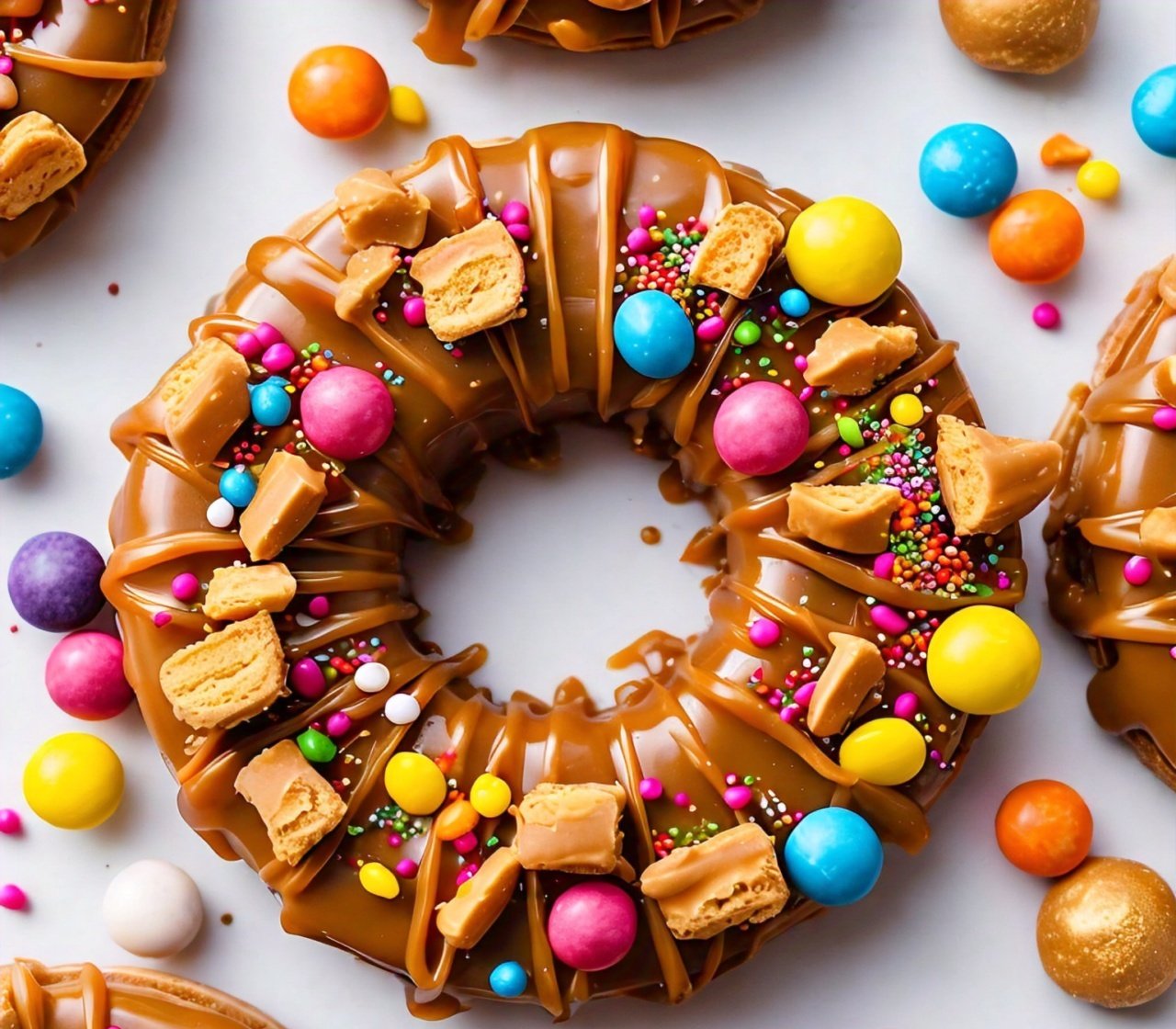
Starting Your Own Caramel Crunch Business
Starting a caramel crunch business can be a rewarding venture for those passionate about creating and sharing this delightful treat. The first step is to develop a unique recipe that stands out in the market. Experimenting with different ingredients and flavor combinations can help create a signature product that appeals to a broad audience. Sourcing high-quality ingredients is crucial, as consumers are increasingly looking for premium products.
Health Considerations
Nutritional Information
While caramel crunch is undeniably delicious, it’s important to be aware of its nutritional content. Traditional caramel crunch is high in sugar and fat, which contribute to its rich flavor and satisfying texture. A typical serving can contain significant amounts of calories, saturated fat, and carbohydrates. It’s essential to read the nutritional labels on packaged caramel products to understand what you’re consuming. Homemade versions allow for better control over the ingredients and portion sizes, potentially making it a bit healthier. Nevertheless, due to its high sugar content, caramel should be considered an occasional treat rather than a daily snack.
Caramel Crunch and Dietary Restrictions
With the rise in awareness of dietary restrictions and preferences, there are now many variations of caramel crunch to accommodate different needs. For those with gluten intolerance, gluten-free versions can be made using gluten-free cereals or nuts. Dairy-free or vegan caramel can be crafted using coconut oil, coconut cream, or other plant-based alternatives in place of butter and cream. Nut-free versions can be made by substituting nuts with seeds or puffed rice, making it safer for those with nut allergies. By tweaking the ingredients, caramel crunch can be enjoyed by a broader audience, ensuring everyone can partake in this delightful treat.
Moderation and Enjoyment
Like any indulgent treat, the key to enjoying caramel crunch lies in moderation. While it’s tempting to devour large quantities, especially when the flavor and texture are so captivating, it’s important to remember that moderation is crucial for maintaining a balanced diet. Enjoying a small portion of caramel crunch as an occasional treat can be a part of a healthy lifestyle. Pairing it with a piece of fruit or a cup of tea can enhance the experience without overindulging. By savoring caramel crunch in small amounts, you can enjoy its delightful taste while keeping your overall dietary intake balanced.


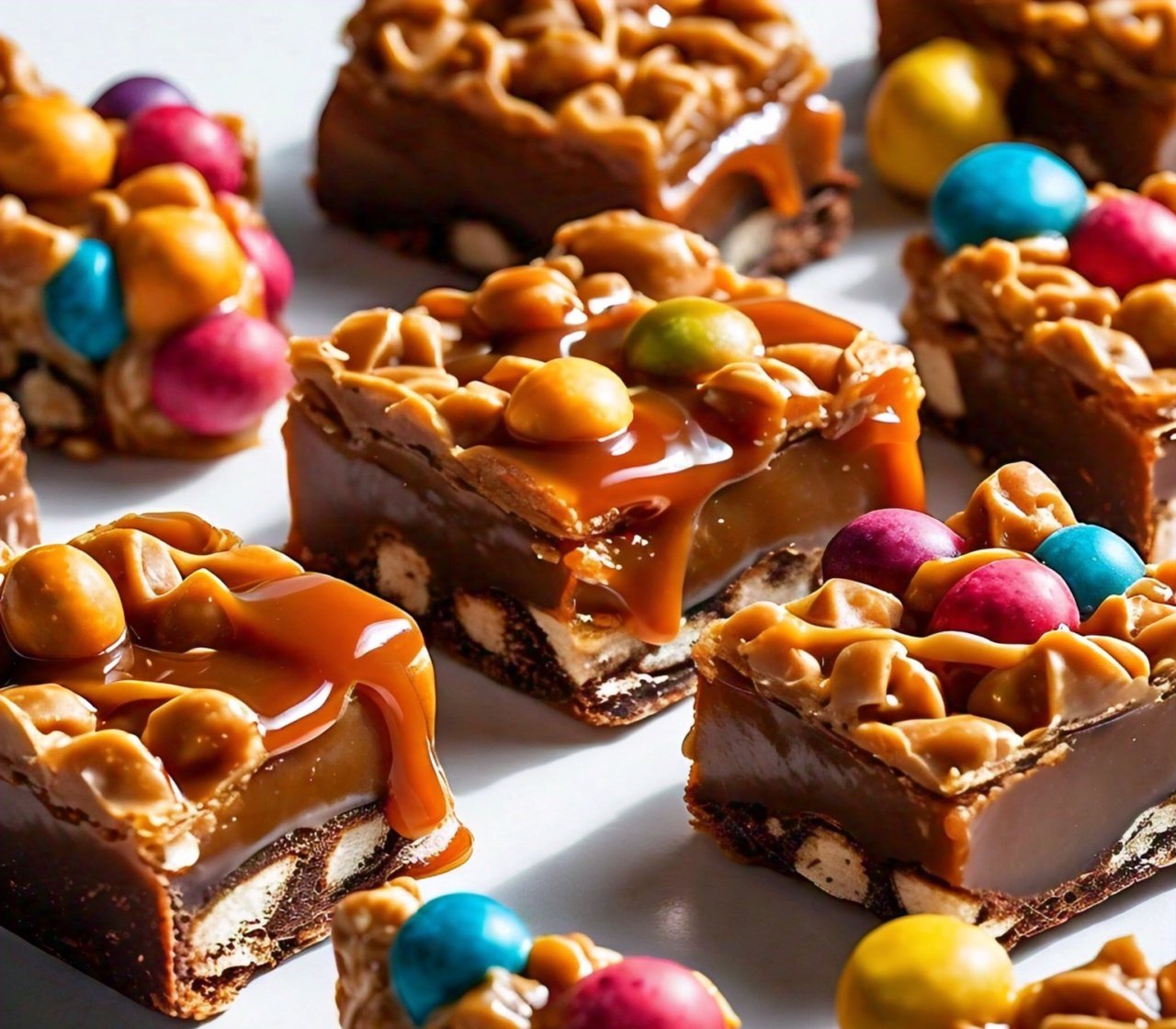
2 thoughts on “Caramel Crunch: 7 Irresistibly Delicious Recipes and Tips”